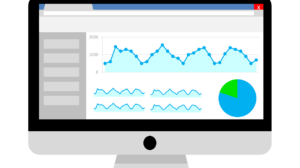B2B marketers do not tolerate the effects of dirty data. At the same time, most marketers would prefer not to be involved with managing the data they use. Keeping marketing data clean is mostly a ‘not in my back yard’ issue. Marketers will talk about how important it is and how it’s a must, but they don’t want to, or don’t have the expertise to roll up their sleeves and clean their customer databases. However, data is a small part of any marketing budget, but there are plenty of reasons not to overlook the dirty data problem. IBM estimates losses in the US economy are over $3 trillion per year from poor data quality and costs businesses 15 to 25 percent of revenue.
Dirty data includes both records for contacts that are no longer with the company, companies that are no longer in business, and inaccurate information in critical targeting or contact fields. An inaccurate email is bad but having the wrong industry or company size assigned to a company can have the same impact, and it can spread across all records in that company.
Additionally, one of the most obvious effects of dirty data is improper expectations. Thinking you have a large, accurate list of target accounts when you don’t can cause you to improperly set expectations for your sales and marketing teams, which would end in teams focusing on the wrong problem when they ultimately don’t generate expected results.
In fact, poor CRM prospect data is responsible for a loss of 27 percent of each rep’s total selling time. When you have inaccuracies in your target fields (industry, company size, geography, etc), you will end up sending campaigns to the wrong audience. Poor quality CRM data also hurts the morale of sales and marketing employees that are working with it. It’s disheartening to pour your heart and soul into a campaign just to find out your efforts were undermined because you started with bad data. Or for a sales development representative to make 200 calls a day and have bad phone numbers and inaccurate personal data. This type of data issue regularly leads to sales reps saying they don’t want certain leads anymore because the data is too inaccurate. Overall, pursuing the wrong accounts or having inaccurate contact information is a waste of time and resources for everyone.
Also, there are additional costs for dirty data when you look at the CRM, ERP, and marketing automation systems used today. Most of these systems have a cost for the volume of data you keep in the system. Companies that use multiple systems are paying multiple times to house dirty data. If you look at the cost of systems like Salesforce, Marketo, Pardot, etc., compared to what the data costs that you put into these systems, it’s easy to see how the cost to house bad data can quickly become a significant portion of your data budget.
Dirty data within emails can get marketers kicked off email delivery platforms and can lead them to getting blacklisted. A lesser known but just as problematic of an issue is inaccurate targeting of email campaigns due to information like industry and geography being wrong. Complaints from recipients can also have marketers booted from their internet service provider or email delivery service.
Improper targeting in email campaigns can also hurt your SEO. By targeting the correct audience, with accurate data, you increase the number of purposeful searches for your site and users will tend to spend more time on your site, decreasing the likelihood for them to go back to Google and search for the same keywords. When you target the wrong contacts with your emails, it has the opposite effect. This is important because Google SEO thinks your site doesn’t fit the keywords searched if visitors quickly leave and run the same or a similar search again. This causes them to lower your search ranking for those keywords.
The easiest way to keep your data clean is to start with clean data. The two main areas to cover here are thoroughly vetting new data providers and having all contact and account data automatically fed into your systems screened. The type of screening will depend on the volume of data you get this way. If it’s manageable, someone can manually review it. Otherwise, filters can be set for what is manually reviewed or it can be outsourced to a third party.
Yet, reviewing data providers is usually easy, so it’s advisable to request and review a contact data sample of a reasonable size before making any purchase. The number of records in a sample is crucial because if they only give you five records, they can screen them, then only when a list is purchased is when you can see what they’re really providing. Reviewing the sample will show you the accuracy of both the individual contact fields as well as the overall targeting.
Contact data goes bad quickly and if you start with accurate data, you will still need to regularly clean your contacts. Flagging and removing email bounces is easy enough to do, but many emails will never bounce even when the contact is long gone. The best solution for a thorough cleaning is always a third party that can leverage a large internal database and go deeper than email verification.




